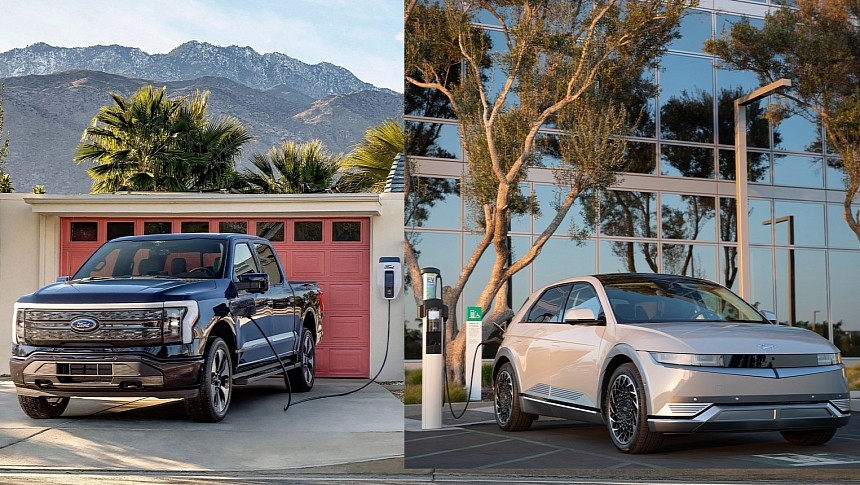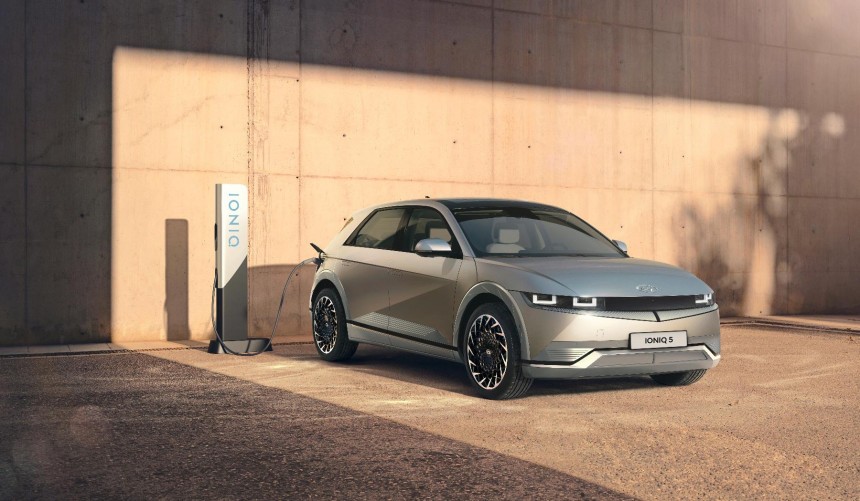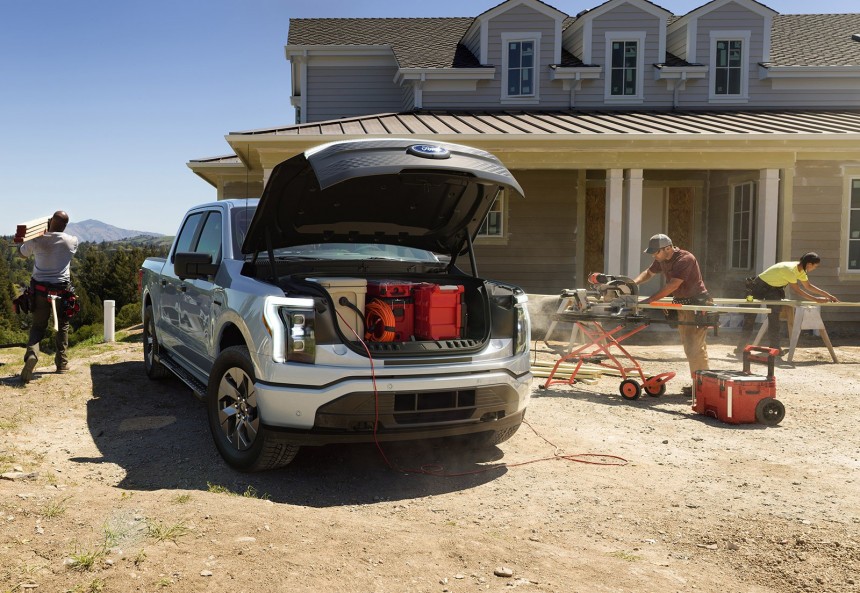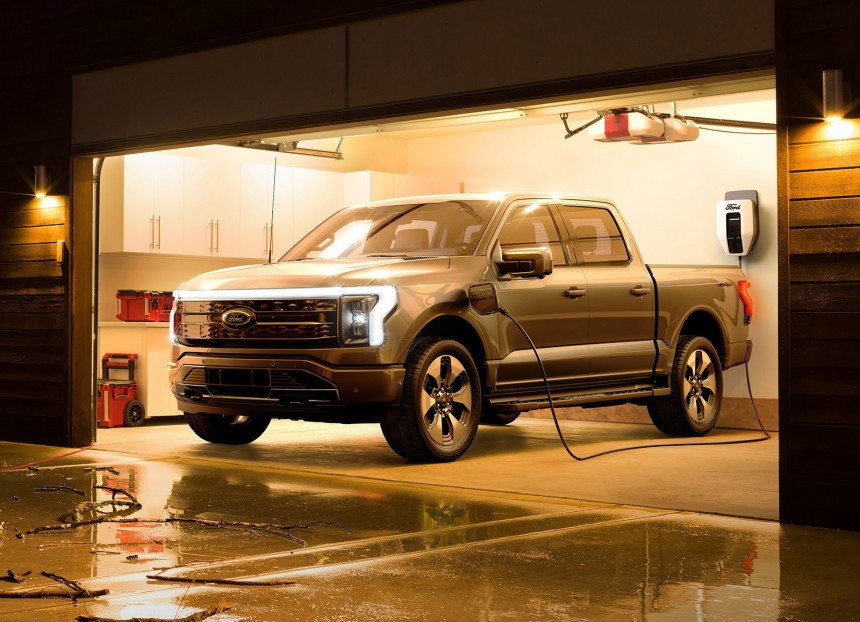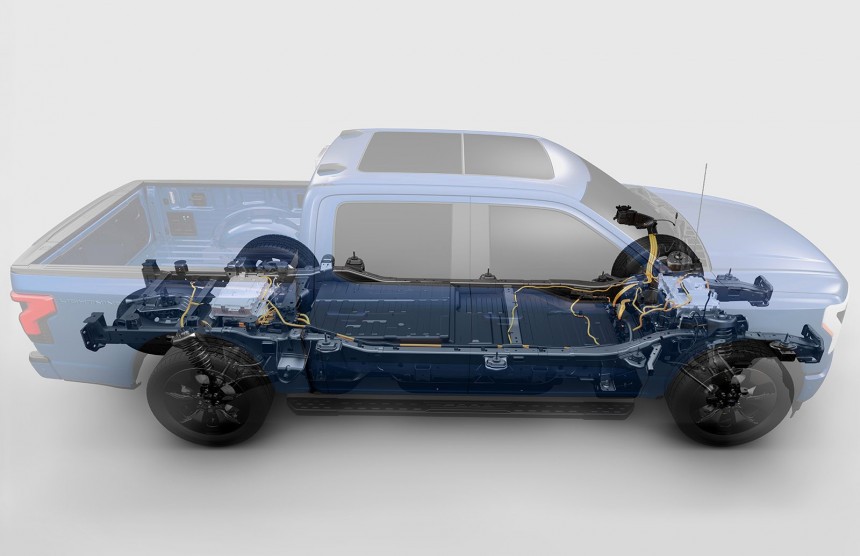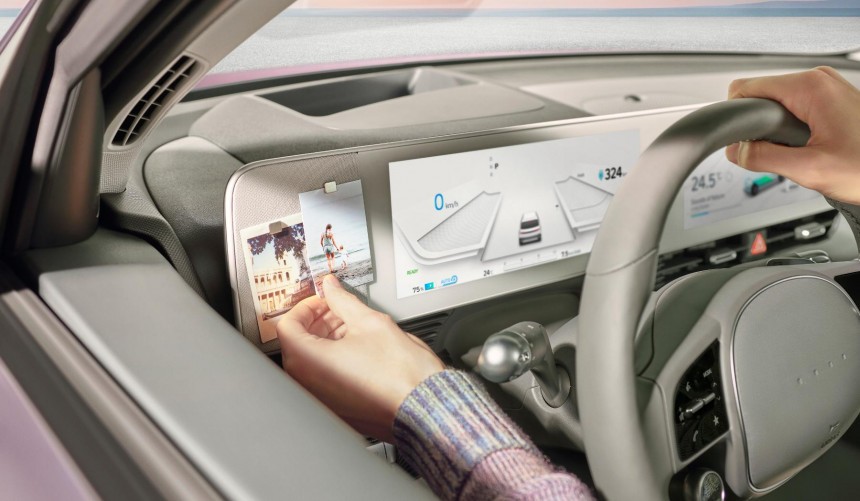Some people marvel at coincidences, while others believe they do not exist: these events would be God's way of calling your attention to something important, which would eliminate the random effect that defines them as coincidences. Whatever your opinion about this is, I have to say two recent stories were very welcome for a discussion about battery electric vehicle (BEV) ranges I proposed on August 12.
If you have not seen it, I think we need to talk about what can be truly considered as the maximum range in vehicles that should not go below 20% charge and must be fast charged to up to 80% or 90% capacity. What good is the absolute 100% when you are not supposed to count on that percentage? On top of that, I also reminded my readers about Tesla's tactics of overestimating how far its vehicles can travel and creating a diversion team to cancel complaints based on the predictable disappointment this exaggeration induces.
After publishing my story, I learned about two other situations that show how urgent a BEV range discussion is. One of them came from MotorTrend's long-term Hyundai IONIQ 5 test. The other emerged from Canada, where Dalbir Bala got so distraught with his Ford F-150 Lightning that he is calling BEVs the "biggest scam of modern times."
The issue with MotorTrend's IONIQ 5 had nothing to do with operation problems, as the magazine stressed. The Hyundai worked as intended, but the problem is that turning A/C on cuts range in concerning ways.
Alex Leanse said that he once had 75 miles of range left until he entered the car and activated climate control. He was immediately left with 70 miles. On another occasion, the MotorTrend writer charged the electric SUV to 90% and got 240 miles of range. As soon as he set A/C to 66ºF (18.9ºC) and put the system's fan at its maximum speed (8), the range dropped to 188 miles. That's 52 miles less, or a 21.7% loss.
Hyundai has some mitigation measures to avoid such steep range problems. One of them is the "Driver Only" mode, which leaves only the vents for the person behind the steering wheel working. That partially restored the range to 208 miles, but what if the car was carrying a family? Also, selecting a lower fan speed (2) allowed the vehicle to drive for 220 miles, but the 20 miles it lost just for having the A/C on are relevant. Although the driver can at least trust the range the IONIQ 5 discloses, the 8.3% loss is not negligible. Leanse lamented that the ventilated front seats do not help keep the heat down, considering how much less energy they demand.
Fox Business published the other situation. Bala told the outlet that he had four major disappointments with his electric pickup truck. The first one happened soon after the man bought his Lightning: it related to his expenses with two Level 2 chargers installed respectively at his home and work. Each cost CAD5,000 ($3,715 at the current exchange rate), and he spent CAD6,000 ($4,458) more to upgrade his home's electric panel. That's CAD16,000 ($11,889), which you must add to the CAD115,000 ($85,454) Bala invested in the vehicle itself.
The second was how long Ford took to fix damages in his pickup truck due to a collision soon after he started driving it. According to Bala, the front bumper required minor assembly, but he did not have his vehicle back for six months. Tesla has been facing similar repair times with its vehicles and the crowded Tesla Service Centers, but what is Ford's excuse with the thousands of dealerships and authorized service shops it has? Are they being properly trained to deal with electric vehicles? Bala did not clarify what delayed the repair for so long, and Ford's comments about the case also did not mention anything about that.
The most serious disappointment was with the price of fast charging. The customer had heard that it was much cheaper to run a BEV. However, he said the price for giving his F-150 more electrons as fast as possible was higher than gas costs for a similar mileage. Bala spent $56 to charge his electric truck from 10% to 90% in Fargo, North Dakota. Let's check the numbers.
Bala lives in Winnipeg, which is 223 miles (359 kilometers) from Fargo. All F-150 Lightning options come with the SuperCrew body option. The most frugal SuperCrew F-150 on highways powered by an engine comes with the 2.7-liter V6 EcoBoost, delivering 26 MPG in that environment. Such a pickup truck would need 8.6 gallons of gas to go from Winnipeg to Fargo. The gas-guzzler in the lineup would be the Raptor, with 15 MPG on the highway. That would translate into 14.9 gallons to cover the same 223 miles.
According to AAA Gas Prices, the gallon of regular gasoline in North Dakota currently costs $3.78. Under such conditions, the 2.7-liter V6 EcoBoost F-150 would spend $32.51, while the Raptor would demand $56.32. That proves Bala was mostly right, even if that may change depending on the context. Premium gas is sold at $4.41 in North Dakota. Using it would already make the Raptor more expensive than the Lightning, but not the F-150 with the gas-sipping V6 – if that is even possible to say.
The final letdown he had with his truck refers more to fast-charging network hurdles than to the pickup truck. His second stop had to be in Albertville, Minnesota, 206 miles away from Fargo. The issue is that the free charger there was not working. So he drove to nearby Elk River, but the stall also failed there. With 12 miles of range left and his wife and kids in the car, he had his F-150 Lightning towed to a Ford dealership, rented a gas-powered pickup truck, and drove to Chicago. Bata picked up his F-150 on his way back to Winnipeg.
That caused a lasting impression on him – sadly, for all the restrictions he faced with it. It was in repairs for six months. Bata does not think he can take it to his lake cabin, for off-grid camping, or on a road trip, as the one he tried to do with his family to Chicago. This is why he thinks BEVs are "the biggest scam of modern times."
More than discussing how BEV range is established and disclosed, these situations show why this subject is so crucial. The elephant in the room is the low amount of energy battery packs can retain. It is only enough for the current maximum ranges because electric motors are incredibly efficient. However, it is too little for traveling the same distances in cold weather, in hot weather, with loads of luggage, or towing a trailer. Dividing the little energy available for moving the car greatly reduces how far the vehicle can travel.
To add insult to injury, it takes a lot of time to recharge, even when chargers are working as they should. As I already said, everybody adopting the North American Charging Standard (NACS) is trying to escape the charging crisis that Bata experienced firsthand. Theoretically, several others also will until these cars can use Tesla's superchargers, but not even that will help.
In Portugal, several Tesla owners formed a 4-hour waiting line for a chance to supercharge their cars in Alcácer do Sal, Algarve, on August 12. That happens every year during the summer vacations, as pictures in Facebook groups reveal. That also occurs in other countries, including the US. The current charging model makes that unavoidable.
What is the point of placing thousands of chargers in locations where they will only be fully used every once in a while? Nobody wants to invest in charging networks to lose money, so you will always see just enough for regular demand. When it peaks, the long time that charging needs will make lines quite likely. The least amount of time most vehicles spend fast charging from 10% to 80% in the best-case scenario is 30 minutes. Multiply that by all vehicles waiting in any line, and there is your explanation for video games and Netflix in BEVs.
The F-150 Raptor with a 23-gallon fuel tank can travel 345 miles on the highway. It can find juice anywhere and takes only a few minutes to top up. More than discussing the range an electric pickup truck would need to compete with that, it may be valid to either give up on making such a vehicle with the current battery technology or to give customers a more realistic perspective on what these vehicles can do.
Bata's F-150 Lightning could travel just a bit more than 200 miles. Would he have purchased it if he knew that was the case? Will anyone wish to buy a Hyundai IONIQ 5, knowing that the A/C will give them range anxiety? More than this, we should ask if we really want BEV adoption at all costs, for all use cases, and in all market segments. Take this F-150 Lightning owner's case as the perfect example of how it may backfire spectacularly. He'll convince way more people not to buy a BEV than if he had the correct information to make that a personal choice. In other words, overestimated ranges are hurting BEV adoption more than they can inflate sales. If BEVs are not for everyone, as even their advocates acknowledge, which is the plan B to cut carbon emissions in transportation as much as possible? Do you also hear crickets?
After publishing my story, I learned about two other situations that show how urgent a BEV range discussion is. One of them came from MotorTrend's long-term Hyundai IONIQ 5 test. The other emerged from Canada, where Dalbir Bala got so distraught with his Ford F-150 Lightning that he is calling BEVs the "biggest scam of modern times."
The issue with MotorTrend's IONIQ 5 had nothing to do with operation problems, as the magazine stressed. The Hyundai worked as intended, but the problem is that turning A/C on cuts range in concerning ways.
Hyundai has some mitigation measures to avoid such steep range problems. One of them is the "Driver Only" mode, which leaves only the vents for the person behind the steering wheel working. That partially restored the range to 208 miles, but what if the car was carrying a family? Also, selecting a lower fan speed (2) allowed the vehicle to drive for 220 miles, but the 20 miles it lost just for having the A/C on are relevant. Although the driver can at least trust the range the IONIQ 5 discloses, the 8.3% loss is not negligible. Leanse lamented that the ventilated front seats do not help keep the heat down, considering how much less energy they demand.
Fox Business published the other situation. Bala told the outlet that he had four major disappointments with his electric pickup truck. The first one happened soon after the man bought his Lightning: it related to his expenses with two Level 2 chargers installed respectively at his home and work. Each cost CAD5,000 ($3,715 at the current exchange rate), and he spent CAD6,000 ($4,458) more to upgrade his home's electric panel. That's CAD16,000 ($11,889), which you must add to the CAD115,000 ($85,454) Bala invested in the vehicle itself.
The most serious disappointment was with the price of fast charging. The customer had heard that it was much cheaper to run a BEV. However, he said the price for giving his F-150 more electrons as fast as possible was higher than gas costs for a similar mileage. Bala spent $56 to charge his electric truck from 10% to 90% in Fargo, North Dakota. Let's check the numbers.
Bala lives in Winnipeg, which is 223 miles (359 kilometers) from Fargo. All F-150 Lightning options come with the SuperCrew body option. The most frugal SuperCrew F-150 on highways powered by an engine comes with the 2.7-liter V6 EcoBoost, delivering 26 MPG in that environment. Such a pickup truck would need 8.6 gallons of gas to go from Winnipeg to Fargo. The gas-guzzler in the lineup would be the Raptor, with 15 MPG on the highway. That would translate into 14.9 gallons to cover the same 223 miles.
The final letdown he had with his truck refers more to fast-charging network hurdles than to the pickup truck. His second stop had to be in Albertville, Minnesota, 206 miles away from Fargo. The issue is that the free charger there was not working. So he drove to nearby Elk River, but the stall also failed there. With 12 miles of range left and his wife and kids in the car, he had his F-150 Lightning towed to a Ford dealership, rented a gas-powered pickup truck, and drove to Chicago. Bata picked up his F-150 on his way back to Winnipeg.
That caused a lasting impression on him – sadly, for all the restrictions he faced with it. It was in repairs for six months. Bata does not think he can take it to his lake cabin, for off-grid camping, or on a road trip, as the one he tried to do with his family to Chicago. This is why he thinks BEVs are "the biggest scam of modern times."
To add insult to injury, it takes a lot of time to recharge, even when chargers are working as they should. As I already said, everybody adopting the North American Charging Standard (NACS) is trying to escape the charging crisis that Bata experienced firsthand. Theoretically, several others also will until these cars can use Tesla's superchargers, but not even that will help.
In Portugal, several Tesla owners formed a 4-hour waiting line for a chance to supercharge their cars in Alcácer do Sal, Algarve, on August 12. That happens every year during the summer vacations, as pictures in Facebook groups reveal. That also occurs in other countries, including the US. The current charging model makes that unavoidable.
The F-150 Raptor with a 23-gallon fuel tank can travel 345 miles on the highway. It can find juice anywhere and takes only a few minutes to top up. More than discussing the range an electric pickup truck would need to compete with that, it may be valid to either give up on making such a vehicle with the current battery technology or to give customers a more realistic perspective on what these vehicles can do.
Bata's F-150 Lightning could travel just a bit more than 200 miles. Would he have purchased it if he knew that was the case? Will anyone wish to buy a Hyundai IONIQ 5, knowing that the A/C will give them range anxiety? More than this, we should ask if we really want BEV adoption at all costs, for all use cases, and in all market segments. Take this F-150 Lightning owner's case as the perfect example of how it may backfire spectacularly. He'll convince way more people not to buy a BEV than if he had the correct information to make that a personal choice. In other words, overestimated ranges are hurting BEV adoption more than they can inflate sales. If BEVs are not for everyone, as even their advocates acknowledge, which is the plan B to cut carbon emissions in transportation as much as possible? Do you also hear crickets?
